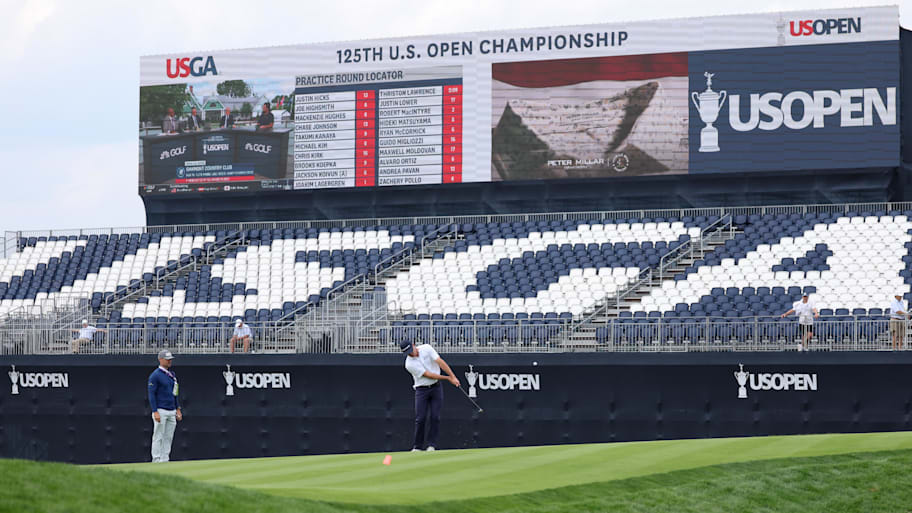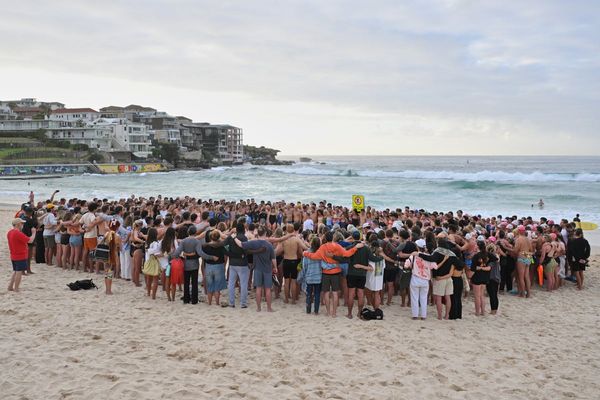
“Nobody wins the Open; it wins you.”
That was how Cary Middlecoff described the U.S. Open, which he won twice (1949 and 1956). The major is known as the most grueling test in golf. Fast greens, narrow fairways and thick rough are as much part of the championship as the players themselves.
Some years, that statement is enhanced. So ahead of the 125th championship at Oakmont Country Club, one of the sport’s most penal venues, let’s look back at some of the hardest U.S. Opens ever.
1898: Myopia Hunt Club
This was the first time that the U.S. Open was 72 holes, and with Myopia being a nine-hole course, players saw each hole eight times.
The more experience didn’t matter, though. Fred Herd won at 328, which is the highest score by a winner. He did that by shooting 85 on Day 2 and 84 in the final round, both the highest scores in each round by an eventual champion. Herd was one of two players the entire week who broke 80 in any round.
The scoring average in the third round was 91.3. With a 75 on Day 3, Herd gained 16.3 strokes on the field, the best in U.S. Open history, according to RickRunGood.com.
In addition, J.D. Tucker’s opening 157 that year is the highest round ever shot in a U.S. Open.
Myopia, in South Hamilton, Mass., contested four U.S. Opens in the event’s first 14 years, but ultimately, it was decided the course was too difficult and it was never played there again after 1908.
1951: Oakland Hills Country Club
This was the first time the USGA devised a course for a championship—and it was a brute.
Robert Trent Jones’s redesigned layout in Bloomfield Hills, Mich., was dubbed “The Monster.” Fescue was knee-high. Greenside bunkers were steep-faced with balls intended to stick. And some fairways were as narrow as 19 yards with tiers of sand traps.
“He wanted the penalty for a bad drive to be the same for Sam Snead, who drove it in the third bunker, as it was for Jerry Barber, who hit it in the first one,” Rees Jones, son of Robert Trent, told Sports Illustrated in 1996.
Jones intended to identify players who “crash their way around easy layouts, posting scores that make them appear like great players.”
Mission accomplished. The game’s top player, Ben Hogan, won by two strokes over Clayton Heafner, finishing at 7 over even with a final-round 67. Then, he uttered some of the most famous words in golf history.
“I’m just glad,” Hogan said, “that I brought this course, this monster, to its knees.”
But that might not have been Hogan’s best quote in the winner’s circle.
“Mrs. Jones,” Hogan said to Robert Trent’s wife, who was congratulating him on the victory, “if your husband had to play golf on the courses he designs, your family would be in the breadline.”
1963: The Country Club
This was the 50th anniversary of Francis Ouimet’s triumph in Brookline, Mass., which essentially put golf in the public consciousness of Americans. But a half-decade later, the layout Ouimet made history on wasn’t going to fly.
“In the 1950s, members talked about needing a longer, more challenging golf course for national championships,” Brendan Walsh, the head professional at The Country Club, told Sports Illustrated in 2022. “Four decades had passed since the 1913 U.S. Open. What they came up with was very unusual.”
The course was lengthened to 6,870 yards, with the par was reduced to 71. In an SI preview of the championship, headlined “An Old Club Offers a New Challenge,” Jack Nicklaus explained why the course was so tough.
“The rough is deep and strategically planned,” he said, “the greens are tiny and there is a succession of six, long, tough holes (the 9th through the 14th) capable of exhausting a golfer’s resolution to win, especially during Saturday’s 36 holes of play.”
Add in windy, brisk New England conditions, and Arnold Palmer, Jacky Cupit and Julius Boros shot 9 over, advancing to an 18-hole playoff, in which Boros shot 70 and won his second U.S. Open title.
The 9 over winning score is the highest since World War II, and the total scoring average was 77.55, the seventh highest in relation to par since WWII.
1974: Winged Foot
This is known as simply the “Massacre at Winged Foot.”
It was the first time the championship had 6-inch rough, but the only thing taller than the grass was the scores.
“As high as I had ever seen it,” said 1981 Open winner David Graham told the New York Times, “If you missed the fairway, you were lucky to find your ball.”
The theory is that a year after Johnny Miller shot a final-round 63 the year before at Oakmont to win, the USGA wanted revenge.
“Everybody was telling me it was my fault,” Miller told Golf Digest. “It was like a backhanded compliment. The USGA denied it, but years later it started leaking out that it was in response to what I did at Oakmont. Oakmont was supposed to be the hardest course in America.”
Hale Irwin escaped with a two-stroke victory at 7 over in Mamaroneck, N.Y., and the scoring average that week was 76.73, the highest ever.
For better or worse, though, the extreme carnage made that U.S. Open one of the most memorable in history. Heck, there’s even a book about it.
2007: Oakmont Country Club
Want to know how hard the 2025 venue can be? Here’s what Tiger Woods had to say about it 18 years ago.
“If you’re a 10-handicapper, there is no way you’re breaking 100 out there,” Woods said.
Woods’s words weren’t hyperbolic. Only eight players shot under par all week just outside of Pittsburgh. The cut number was 10 over. Ryan Palmer and Jacob Rogers finished tied for last at 28 over. And the low round of the tournament was Paul Casey’s 4-under 66 on Friday, vaulting him from 104th to seventh on the leaderboard.
“That’s unbelievable,” Justin Rose said of Casey’s round. “When I was going down to the 10th hole, I said to my caddie, ‘he's 3 under,’ and he said, 'well, he hasn’t finished yet.’ And he finished 4 under, so 10 shots better than the field average or more. Unbelievable.”
Angel Cabrera had two rounds under par, and that helped him hoist the trophy. With a one-stroke victory over Woods and Jim Furyk, he finished at 5 over, tied with the 2006 U.S. Open for the highest score since 1974.
This article was originally published on www.si.com as Looking Back at Five of the Most Grueling U.S. Opens in History .







